Excerts from "Mirrors, Strings & Manifolds: The Geometry of Everything," C1994, Pg.3
Four Energy States and Particle Symmetry
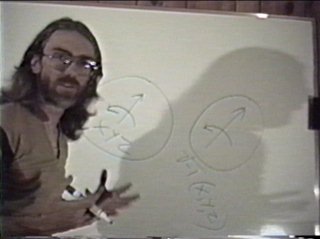 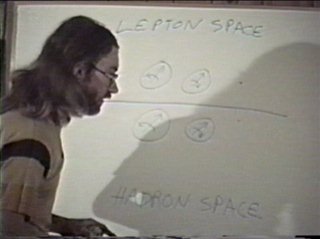 |
The dimensions of quanta (slices of temporal strings) are represented as the dimensions in which they locate their property of volume. Two sets of three physical dimensions with a common time-like dimension are required to support the various classes and attributes of particles, as well as the bipolar nature of charge. Since a quanta can be right-handed or left-handed, and locate its volume in either of two superpositioned manifolds, this model for corpuscular energy supports four distinct states for energy to be in. Eventually these corpuscles are stacked into four string types, which are the foundation for the nuclear shell models and descriptions of the fundamental forces. |
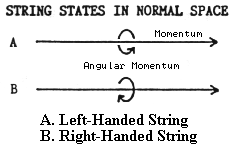
|
This diagram of the geometric string states in normal space is lifted from my early
reports on "Time and Geometry." This is just a reminder that these strings are not static
wires, they're always presumed to be in these geometric states of motion. |
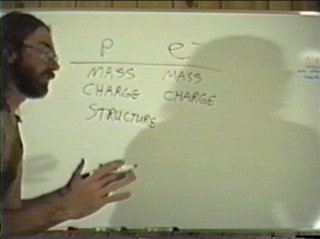 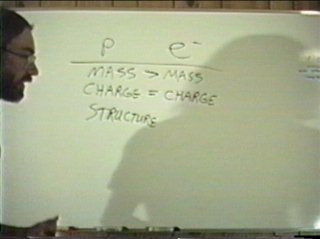 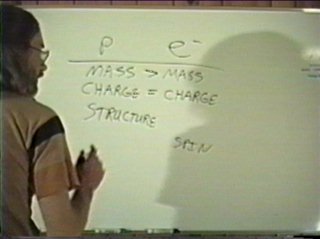 |
The properties of the proton and electron are compared, and I mean the very basic properties.
Those of interest are mass, charge, and structure. The symmetry of the proton and electron, in
particular their charge equivalence, lead me to conjecture that the missing structure of the
lepton is really there, but for some reason, I just can't see it. If the structure of the lepton
has all its spatial dimensions rotated 90 degrees from the dimensions I am familiar with, then
perhaps all that is visible of the lepton's structure is its common intersection with the dimensions
I am familiar with, and the effects the lepton has on the space-time metric I am familiar with.
I speculate that the mass of the *lepton can be concealed in the same manner as its volume (structure),
radiated in an orthogonally-rotated space-time metric. Hence, leptons appear point-like and tend to
display a rather low mass compared to their hadron twins. (A difference in the free energy, or
energy density, between the two superpositioned manifolds can also significantly impact the
apparent mass and the rates of physical interactions of particles.)
*In 2008 I'm not certain that's a good explanation of electron mass, it was very fuzzy logic, even
in 1994. See String Basics for a more lucid description of particle mass.
|
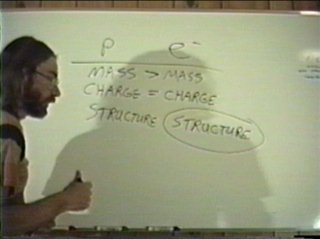 |
Structure, the lepton must have it! I cannot see the air, but I know it is there by the wind bending the branches of the trees. There is no way for the lepton to support its physical manifestations of force without it. It is not a magic particle that produces charge from nothing. It has a quark structure, it pins strings just as the hadrons do, and the laws which apply to hadron structure also apply to lepton structure. There are lepton quarks. They come in the same up and down flavors. I have never myself understood the need for a color charge for quarks, and I suspect its no longer pertinent in the form of this model, but if you want colors, take metallic ones for the lepton quarks. Copper, silver, and gold. Its less confusing that way. The reason I don't believe color is a genuine physical property is because physical seperation of the quarks is shown to be a physical constraint of the geometry. The concept of quantum states is perhaps an oversimplification, a work-around in the absence of complete information on the nature of nuclear structure. (Color charge is an invention to give quarks an additional property which differs from the other quarks, as otherwise they all appear to be in all the same quantum states, which is considered a no-no for fermions.) |
Go Back Next Page